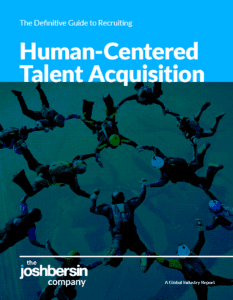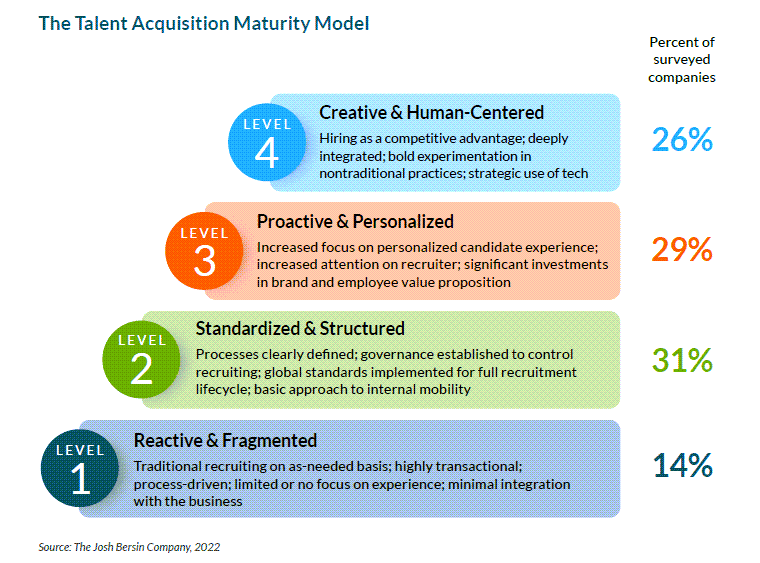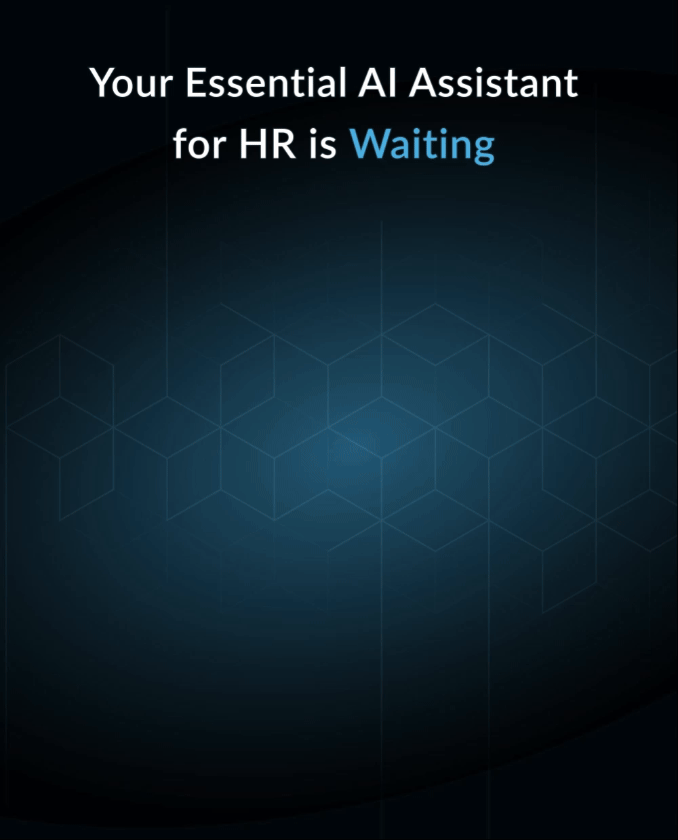Recruiting Is Harder Than It Looks: 74% Of Companies Underperform
This week we launched our new global Talent Acquisition research (all about sourcing, recruiting, and attracting people) and the results are staggering. While nearly every company is trying to hire (the unemployment rate is below 3.6% and the economy is creating more than 400,000 new jobs each month), recruiting teams are not keeping up.
In fact, our comprehensive research shows that only one in four companies are recruiting in an optimized way today.
 Yes, companies are comfortable with the “post and pray” model: buy a job ad, place your positions on Indeed, LinkedIn, or another job board, and promote your company’s pay, benefits, and fantastic work experience. Our research shows, however, that this is no longer enough. In a diverse world of workers, companies have to diversify their sourcing, create a holistic employment brand, prioritize internal mobility, simplify the candidate experience, and use AI and technology strategically.
Yes, companies are comfortable with the “post and pray” model: buy a job ad, place your positions on Indeed, LinkedIn, or another job board, and promote your company’s pay, benefits, and fantastic work experience. Our research shows, however, that this is no longer enough. In a diverse world of workers, companies have to diversify their sourcing, create a holistic employment brand, prioritize internal mobility, simplify the candidate experience, and use AI and technology strategically.
And guess what else we found. Recruiters, the human part of the process, have become more important than ever. Let’s face it: recruiting is a people-centric process. No software tool can adequately assess an individual’s fit with your job, your team, or your company. So recruiters, one of the most important jobs in HR, are becoming critical to success. That’s why our maturity model labels “Human-Centered Recruiting” the most advanced of all.
 |
This is not to say, as the model points out, that you don’t need process, technology, and tools. Quite the opposite. The proliferation of sourcing intelligence, interview intelligence, assessment, and mobile recruiting tools is massive. But as our research points out, it’s not just important to “arm up” with technology – you have to use the technology to pinpoint your hiring, build creative campaigns to attract people, and train and empower recruiters to do their jobs well.
I remember sitting on a plane watching a software company recruiter using LinkedIn to frantically send InMails to hundreds of candidates for hours. She told me it was one of the most frustrating things she does. Today I hope she’s using a more intelligent and automated process, and spending her valuable time talking with people over the phone (or carefully looking at their video interviews, assessments, or job previews.)
Recruiting, by its very nature, is the most important thing HR organizations do. If you aren’t finding the best, brightest, and most aligned people to join your company, all the other management and business process work will fail. So recruiters, at their core, are doing one of the most strategic jobs in the company.
I interviewed the head of Talent Acquisition at a large oil company years ago and he told me a funny story. They tried to correlate dozens of factors to understand which job candidates became their top petroleum engineers. They looked at college degree, grade point average, prior work experience, salaries, location, and more. Ultimately he told me that none of these factors seemed to matter. After months of analysis, he concluded that the most predictive factor of all, in hiring a great engineer, was the recruiter. As he told me, “great recruiters find great people.”
And this is what the research is all about. We are in a world where every job candidate has options. If you aren’t focused on building a holistic employment brand, making your company an amazing place to work, and using that information to find fantastic job candidates (both inside and outside the company, by the way), no amount of process or technology will work. It’s time to use technology to create a “Creative, Human-Centric Process.”
This research took more than a year to complete, and our Director of Research, Janet Mertens, has detailed some of the findings in this article. Let me point to some resources you can use.
First, the comprehensive research (and tools for use in your HR organization) is available to our Research Members. We encourage you to join to get all the details.
Second, if you’re looking for some high-level information, you can download the executive summary, maturity model, and overview of the findings.
Third, if you’re looking to improve your recruiting capabilities and give your HR team some skills, join our Josh Bersin Academy course Talent Acquisition at a Crossroads. You’ll hear from senior talent acquisition experts at Bayer, L’Oreal, Encompass Health, and others – and we’ll teach you all about “total employment brand” and how to build a seamless candidate experience.
Finally, I invite you to join us at the Irresistible Conference, May 23-25 in Los Angeles. We have an entire track dedicated to talent acquisition, with workshops, research presentations, and case studies from companies like Microsoft, IBM, Lego Group, Walmart, L’Oreal, and many more.
If you think it’s time to transform or fix your talent acquisition tech stack or overall process, we’re here to help. We offer a range of advisory services and our team knows this market well.
Bottom line: in this time of labor shortages, job-hopping, and increase in wage inflation, it’s business-critical to get this process right. Talent Acquisition has become one of the most important priorities in business.
PS. If you don’t believe that recruiting is difficult, consider this new data. The “Fill Rate,” the percentage of jobs filled vs. jobs posted in the United States, is at an all-time low. For every ten new jobs created, only six are getting filled. Companies are falling behind – this research will help you keep up.
 |
Additional Information
From The Great Resignation To The Great Inflation. It’s Time To Get Creative.
